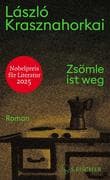Für einen reflektierten Umgang mit der medialen Bilderflut brauchen junge Menschen visuelle Kompetenzen. In Bildungseinrichtungen braucht es adäquate didaktische Settings, in denen Schüler:innen lernen, sich kritisch-reflexiv mit Bildern auseinanderzusetzen.
Ein methodischer Ansatz kann in Visual Thinking Strategies gesehen werden. VTS verwendet Bilder als Ausgangspunkt, um neben visuellen auch kognitive und soziale Lernprozesse bei Schüler:innen anzuregen.
Inhaltsverzeichnis
Vorwort . . . . . . . . . . . . . . . . . . . . . . . . . . . . . . . . . . . . . . . . . . . . . . . . . . . . . . . . . . . . . . . . . . . . . . . . . . 7
Christian Kraler, Universität Innsbruck
Zur Einführung Visualität und Formale Bildung . . . . . . . . . . . . . . . . . . . . . . . . . . . . . . . . . . 11
I Grundlagen . . . . . . . . . . . . . . . . . . . . . . . . . . . . . . . . . . . . . . . . . . . . . . . . . . . . . . . . . . . . . . . . 15
1 Einleitung . . . . . . . . . . . . . . . . . . . . . . . . . . . . . . . . . . . . . . . . . . . . . . . . . . . . . . . . . . . . . . . . . . . . 15
2 Bildung und Visualität . . . . . . . . . . . . . . . . . . . . . . . . . . . . . . . . . . . . . . . . . . . . . . . . . . . . . . . . 19
2. 1 Entwicklungspsychologie und Ästhetische Entwicklung . . . . . . . . . . . . . . . . . . . . . . 19
2. 2 Konzept der visuellen Bildung . . . . . . . . . . . . . . . . . . . . . . . . . . . . . . . . . . . . . . . . . . . . . 20
2. 3 Abigail Housen und ästhetische Bildung . . . . . . . . . . . . . . . . . . . . . . . . . . . . . . . . . . . . 23
2. 3. 1 Abigail Housens Theorie der ästhetischen Entwicklung . . . . . . . . . . . . . . . . 24
2. 3. 2 Aesthetic Development Interview . . . . . . . . . . . . . . . . . . . . . . . . . . . . . . . . . . . . 24
2. 3. 3 Ästhetische Entwicklungsstufen . . . . . . . . . . . . . . . . . . . . . . . . . . . . . . . . . . . . . . 26
2. 3. 4 Housens Theorie als Ausgangspunkt für Visual Thinking Strategies . . . . . . . 28
2. 4 Abigail Housens theoretische Bezugspunkte . . . . . . . . . . . . . . . . . . . . . . . . . . . . . . . . . 29
2. 4. 1 James M. Baldwin (1861 1934) . . . . . . . . . . . . . . . . . . . . . . . . . . . . . . . . . . . . . . 29
2. 4. 2 Jean Piaget (1896 1980) . . . . . . . . . . . . . . . . . . . . . . . . . . . . . . . . . . . . . . . . . . . . . 31
2. 4. 3 Lev Vygotskij (1896 1934) . . . . . . . . . . . . . . . . . . . . . . . . . . . . . . . . . . . . . . . . . . 33
2. 4. 4 Rudolf Arnheim (1904 2007) . . . . . . . . . . . . . . . . . . . . . . . . . . . . . . . . . . . . . . . 35
2. 5 Ergänzende Bezugssysteme zu Visual Thinking Strategies . . . . . . . . . . . . . . . . . . . . . . 37
2. 5. 1 Robert J. Havighurst (1900 1991) . . . . . . . . . . . . . . . . . . . . . . . . . . . . . . . . . . . 37
2. 5. 2 Alfred N. Whitehead (1861 1947) . . . . . . . . . . . . . . . . . . . . . . . . . . . . . . . . . . . 39
2. 6 Zusammenfassung . . . . . . . . . . . . . . . . . . . . . . . . . . . . . . . . . . . . . . . . . . . . . . . . . . . . . . . . 41
3 Visual Thinking Strategies . . . . . . . . . . . . . . . . . . . . . . . . . . . . . . . . . . . . . . . . . . . . . . . . . . . . . 45
3. 1 Entwicklung von Visual Thinking Strategies . . . . . . . . . . . . . . . . . . . . . . . . . . . . . . . . . 45
3. 2 Grundlagen von Visual Thinking Strategies . . . . . . . . . . . . . . . . . . . . . . . . . . . . . . . . . . 46
3. 3 Didaktisches Setting von Visual Thinking Strategies . . . . . . . . . . . . . . . . . . . . . . . . . . 48
3. 3. 1 Kunstobjekt . . . . . . . . . . . . . . . . . . . . . . . . . . . . . . . . . . . . . . . . . . . . . . . . . . . . . . . . 51
3. 3. 2 Moderation . . . . . . . . . . . . . . . . . . . . . . . . . . . . . . . . . . . . . . . . . . . . . . . . . . . . . . . . . 53
3. 3. 3 Gruppe . . . . . . . . . . . . . . . . . . . . . . . . . . . . . . . . . . . . . . . . . . . . . . . . . . . . . . . . . . . . . 56
3. 4 Effekte von Visual Thinking Strategies aus der Sicht von Lehrpersonen . . . . . . . . . 57
3. 5 Visual Thinking Strategies im Spiegel des personenzentrierten Ansatzes
von Carl Rogers . . . . . . . . . . . . . . . . . . . . . . . . . . . . . . . . . . . . . . . . . . . . . . . . . . . . . . . . . . . 58
4 Visual Thinking Strategies und Schlüsselstudien . . . . . . . . . . . . . . . . . . . . . . . . . . . . . . . . 63
4. 1 Byron-Studie . . . . . . . . . . . . . . . . . . . . . . . . . . . . . . . . . . . . . . . . . . . . . . . . . . . . . . . . . . . . . 63
4. 2 San-Antonio-Studie . . . . . . . . . . . . . . . . . . . . . . . . . . . . . . . . . . . . . . . . . . . . . . . . . . . . . . . 68
4. 3 Gardner-Studie . . . . . . . . . . . . . . . . . . . . . . . . . . . . . . . . . . . . . . . . . . . . . . . . . . . . . . . . . . . 71
4. 5 Relevanz für die vorliegende Untersuchung . . . . . . . . . . . . . . . . . . . . . . . . . . . . . . . . . 81
II Empirie . . . . . . . . . . . . . . . . . . . . . . . . . . . . . . . . . . . . . . . . . . . . . . . . . . . . . . . . . . . . . . . . . . . . . 85
5 Forschungsdesign . . . . . . . . . . . . . . . . . . . . . . . . . . . . . . . . . . . . . . . . . . . . . . . . . . . . . . . . . . . . 87
5. 1 Fragestellungen und methodologisches Vorgehen . . . . . . . . . . . . . . . . . . . . . . . . . . . . 87
5. 2 Charakterisierung der Stichprobe . . . . . . . . . . . . . . . . . . . . . . . . . . . . . . . . . . . . . . . . . . . 89
5. 3 Instrumente zur Datenerhebung . . . . . . . . . . . . . . . . . . . . . . . . . . . . . . . . . . . . . . . . . . . . 91
5. 3. 1 Schriftliche Testung . . . . . . . . . . . . . . . . . . . . . . . . . . . . . . . . . . . . . . . . . . . . . . . . . 91
5. 3. 2 Videografie . . . . . . . . . . . . . . . . . . . . . . . . . . . . . . . . . . . . . . . . . . . . . . . . . . . . . . . . . 92
6 Analyse und Interpretation . . . . . . . . . . . . . . . . . . . . . . . . . . . . . . . . . . . . . . . . . . . . . . . . . . . . 99
6. 1 Teiluntersuchung 1 . . . . . . . . . . . . . . . . . . . . . . . . . . . . . . . . . . . . . . . . . . . . . . . . . . . . . . . . 99
6. 1. 1 Ausgangssituation der Experimentier- und Kontrollgruppe . . . . . . . . . . . . . 100
6. 1. 2 Entwicklung in der Kontrollgruppe . . . . . . . . . . . . . . . . . . . . . . . . . . . . . . . . . . . 103
6. 1. 3 Entwicklung in der Experimentiergruppe . . . . . . . . . . . . . . . . . . . . . . . . . . . . . . 108
6. 1. 4 Vergleich der Ergebnisse von Kontroll- und Experimentiergruppe . . . . . . . 113
6. 1. 5 Interpretation der Ergebnisse aus Teiluntersuchung 1 . . . . . . . . . . . . . . . . . . . 118
6. 1. 6 Vergleich mit US-amerikanischen Schlüsselstudien zu
Visual Thinking Strategies . . . . . . . . . . . . . . . . . . . . . . . . . . . . . . . . . . . . . . . . . . . . 120
6. 1. 7 Zwischenfazit zur Teiluntersuchung 1 . . . . . . . . . . . . . . . . . . . . . . . . . . . . . . . . . 124
6. 2 Teiluntersuchung 2 . . . . . . . . . . . . . . . . . . . . . . . . . . . . . . . . . . . . . . . . . . . . . . . . . . . . . . . . 124
6. 2. 1 Beteiligung . . . . . . . . . . . . . . . . . . . . . . . . . . . . . . . . . . . . . . . . . . . . . . . . . . . . . . . . . . 125
6. 2. 2 Deduktive Kategorisierung von Critical Thinking Skills . . . . . . . . . . . . . . . . . 131
6. 2. 3 Induktive Kategorienbildung über offenes Codieren . . . . . . . . . . . . . . . . . . . . 138
6. 2. 4 Interpretation der Ergebnisse aus Teiluntersuchung 2 . . . . . . . . . . . . . . . . . . . 147
6. 2. 5 Zwischenfazit zur Teilstudie 2 . . . . . . . . . . . . . . . . . . . . . . . . . . . . . . . . . . . . . . . . 154
7 Grenzen der vorliegenden Arbeit . . . . . . . . . . . . . . . . . . . . . . . . . . . . . . . . . . . . . . . . . . . . . . 157
III Integration . . . . . . . . . . . . . . . . . . . . . . . . . . . . . . . . . . . . . . . . . . . . . . . . . . . . . . . . . . . . . . . . . . 159
8 Resümee . . . . . . . . . . . . . . . . . . . . . . . . . . . . . . . . . . . . . . . . . . . . . . . . . . . . . . . . . . . . . . . . . . . . . 159
9 Ausblick . . . . . . . . . . . . . . . . . . . . . . . . . . . . . . . . . . . . . . . . . . . . . . . . . . . . . . . . . . . . . . . . . . . . . 165
Verzeichnisse . . . . . . . . . . . . . . . . . . . . . . . . . . . . . . . . . . . . . . . . . . . . . . . . . . . . . . . . . . . . . . . . . . . . . 171
Literaturverzeichnis . . . . . . . . . . . . . . . . . . . . . . . . . . . . . . . . . . . . . . . . . . . . . . . . . . . . . . . . . . . . . . . 171
Abbildungsverzeichnis . . . . . . . . . . . . . . . . . . . . . . . . . . . . . . . . . . . . . . . . . . . . . . . . . . . . . . . . . . . . . 176
Tabellenverzeichnis . . . . . . . . . . . . . . . . . . . . . . . . . . . . . . . . . . . . . . . . . . . . . . . . . . . . . . . . . . . . . . . . 179





































